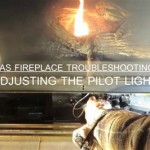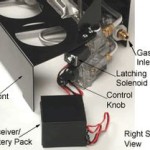Prefab Wood Burning Fireplace Kits: A Comprehensive Guide
Prefabricated, or prefab, wood-burning fireplace kits offer a convenient alternative to traditional masonry fireplaces. These kits consist of pre-manufactured components designed for relatively easy assembly, providing homeowners and contractors with a simplified installation process. This article explores the key elements of prefab wood-burning fireplace kits, including their advantages, components, installation considerations, and maintenance requirements.
Advantages of Prefab Wood Burning Fireplace Kits
Prefab wood-burning fireplace kits present several benefits compared to traditional masonry fireplaces. These advantages contribute to their increasing popularity in residential and commercial construction projects.
Cost-Effectiveness: One of the primary advantages of prefab kits is their lower overall cost. Traditional masonry fireplaces require skilled labor and extensive on-site construction, leading to higher expenses for materials and labor. Prefab kits, on the other hand, are manufactured in a controlled environment, reducing material waste and labor costs. The streamlined installation process further contributes to cost savings.
Simplified Installation: Prefab kits are designed for ease of installation. The components are pre-cut and pre-engineered to fit together seamlessly, minimizing the need for extensive on-site modifications. The kits come with detailed installation instructions, enabling experienced DIY enthusiasts or contractors to install the fireplace efficiently. This simplified process significantly reduces the installation time compared to building a fireplace from scratch.
Consistent Quality: Prefabrication ensures consistent quality control. The components are manufactured in a factory setting under strict quality standards, minimizing the risk of errors or defects. This consistency ensures that the fireplace performs as intended and meets safety regulations. In contrast, the quality of a masonry fireplace can vary depending on the skill of the mason and the quality of the materials used.
Design Flexibility: Prefab wood-burning fireplace kits are available in a wide range of styles and designs. Homeowners can choose from traditional, contemporary, or modern designs to match their architectural style and personal preferences. The kits can also be customized with various finishing materials, such as brick, stone, or tile, to create a unique and personalized look. This design flexibility allows homeowners to achieve the desired aesthetic without the limitations of traditional masonry construction.
Safety Standards: Reputable prefab fireplace kit manufacturers adhere to strict safety standards and undergo rigorous testing. Their products are typically certified by recognized organizations such as UL (Underwriters Laboratories) or CSA (Canadian Standards Association), ensuring that they meet safety requirements for fire resistance, structural integrity, and emissions. These certifications provide homeowners with assurance that the fireplace is safe to operate when installed correctly. Masonry fireplaces, while potentially safe when constructed properly, are more prone to safety issues stemming from poor construction or deterioration over time.
Efficiency: Many modern prefab wood-burning fireplaces are designed with enhanced efficiency features. These features include insulated fireboxes, airwash systems to keep the glass clean, and catalytic combustors to reduce emissions. These features contribute to cleaner burning and improved heat output, making the fireplace a more efficient heating source. While some traditional masonry fireplaces incorporate efficiency features, it is more common to find them in prefabricated units.
Key Components of a Prefab Wood Burning Fireplace Kit
A prefab wood-burning fireplace kit typically includes several essential components, each playing a crucial role in the fireplace's functionality and safety. Understanding these components is important for proper installation and maintenance.
Firebox: The firebox is the heart of the fireplace, where the wood is burned. It is typically constructed of heavy-gauge steel or cast iron, designed to withstand high temperatures. The firebox may be lined with refractory bricks or panels to protect the steel from direct heat and improve heat retention. The size of the firebox determines the maximum log size that can be burned.
Chimney System: The chimney system is responsible for venting the smoke and combustion gases out of the house. Prefab fireplace kits typically include a prefabricated chimney system made of double-wall or triple-wall stainless steel. These chimney systems are designed for safety and efficiency, providing proper draft and minimizing the risk of creosote buildup. The chimney system must be installed according to the manufacturer's instructions to ensure proper venting and prevent fire hazards.
Damper: The damper is a metal plate located in the chimney that can be opened or closed to control the airflow. When the fireplace is in use, the damper is opened to allow smoke to escape. When the fireplace is not in use, the damper is closed to prevent drafts and heat loss. Some prefab fireplaces have a top-mounted damper, which is more efficient than a throat damper in preventing heat loss.
Surround and Facing: The surround and facing are the decorative elements that surround the firebox. These can be made of various materials, such as brick, stone, tile, or metal. The surround and facing not only enhance the aesthetic appeal of the fireplace but also provide a non-combustible barrier between the firebox and the surrounding wall. The choice of surround and facing materials allows homeowners to customize the look of their fireplace to match their interior décor.
Hearth Extension: The hearth extension is a non-combustible surface that extends out from the front of the firebox. It is designed to protect the flooring from sparks and embers that may escape from the fireplace. The size and material of the hearth extension must meet local building codes. Common materials for hearth extensions include brick, stone, tile, or concrete.
Outside Air Kit (Optional): An outside air kit draws combustion air from outside the house instead of from inside. This can improve the efficiency of the fireplace by reducing drafts and preventing negative pressure in the house. An outside air kit also minimizes the risk of backdrafting, which can occur when the fireplace draws air from other appliances, such as furnaces or water heaters.
Installation Considerations for Prefab Wood Burning Fireplace Kits
Proper installation is crucial for the safe and efficient operation of a prefab wood-burning fireplace. Following the manufacturer's instructions and adhering to local building codes is essential. Several key considerations should be taken into account during the installation process.
Building Codes and Permits: Before beginning the installation, it is important to check local building codes and obtain any necessary permits. Building codes dictate the requirements for fireplace installation, including clearances to combustible materials, chimney height, and hearth extension size. Failure to comply with building codes can result in fines and require that the fireplace be removed.
Clearances to Combustible Materials: Maintaining proper clearances to combustible materials is essential to prevent fire hazards. The manufacturer's instructions will specify the required clearances to walls, ceilings, and other combustible surfaces. These clearances must be strictly adhered to. Non-combustible materials, such as cement board or metal studs, can be used to reduce clearances if necessary.
Chimney Installation: The chimney system must be installed correctly to ensure proper venting and prevent the buildup of creosote. The chimney sections must be securely connected, and the chimney must extend high enough above the roof to create adequate draft. The chimney cap should be installed to prevent rain and debris from entering the chimney. Regular chimney inspections and cleaning are necessary to maintain the chimney system and prevent chimney fires.
Hearth Extension Requirements: The hearth extension must be large enough to protect the flooring from sparks and embers. Building codes typically specify the minimum size of the hearth extension based on the size of the firebox opening. The hearth extension must be made of non-combustible materials and must be securely attached to the floor.
Outside Air Supply: Consider installing an outside air kit to improve the efficiency of the fireplace and prevent backdrafting. The outside air intake should be located away from any potential sources of contamination, such as exhaust vents or garbage cans. The outside air duct should be properly insulated to prevent condensation.
Professional Installation: While prefab fireplace kits are designed for relatively easy installation, it is often recommended to hire a qualified professional for the installation. A professional installer will have the experience and knowledge to ensure that the fireplace is installed correctly and safely. They can also help with obtaining permits and ensuring compliance with building codes.
Proper Framing and Support: The fireplace unit can be heavy, requiring adequate framing and support to handle its weight. Ensure the floor or platform supporting the fireplace is level and structurally sound. Consult the manufacturer's specifications for weight requirements and framing recommendations.
Ventilation and Airflow: Adequate ventilation is crucial for proper combustion and safe operation. Ensure the room where the fireplace is installed has sufficient airflow. Avoid obstructing air vents or closing the room off completely. The fireplace should have a dedicated air supply, either through an outside air kit or adequate ventilation in the room.
Gas Line Connections (If Applicable): If installing a dual-fuel fireplace (wood and gas), ensure all gas line connections are performed by a qualified professional. Follow local codes and regulations for gas line installation and safety. Regular inspections of gas lines are essential to prevent leaks and ensure safe operation.
By carefully considering these installation factors, homeowners and contractors can ensure that their prefab wood-burning fireplace operates safely and efficiently for years to come.

Diy Outdoor Fireplace Kit Fremont Makes Hardscaping And Easy

Outdoor Fireplace Kits Masonry Stone

Diy Outdoor Fireplace Kit Fremont Makes Hardscaping And Easy

Outdoor Fireplace Kits Masonry Industries Inc

Outdoor Fireplace Kits Southwest Stone Supply

Mason Lite Indoor Outdoor Wood Burning Fireplace Kit Patio Furnishings

Outdoor Fireplace Kits Masonry Stone

Masonry Fireplace Kits Prefabricated Mason Lite

Fireplaces Prefab Betterpatio Com

Outdoor Fireplace Kits Stonewood S Cape Cod Ma Nh Ct








